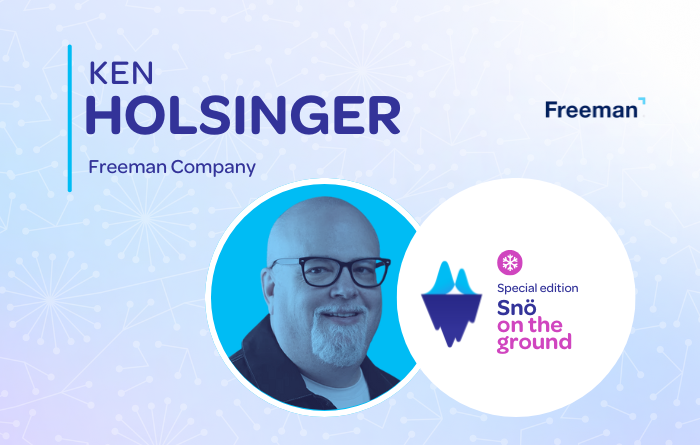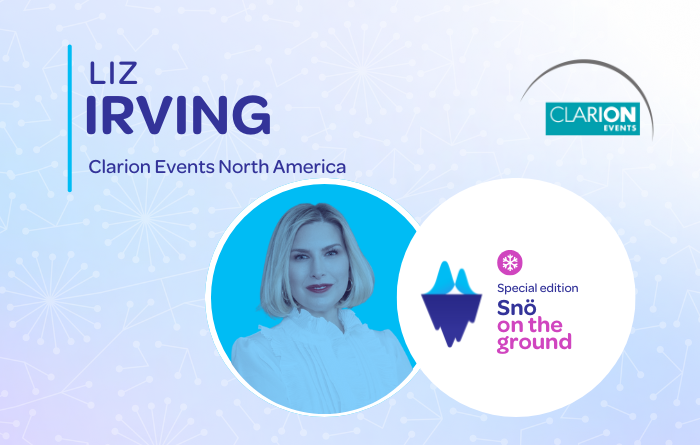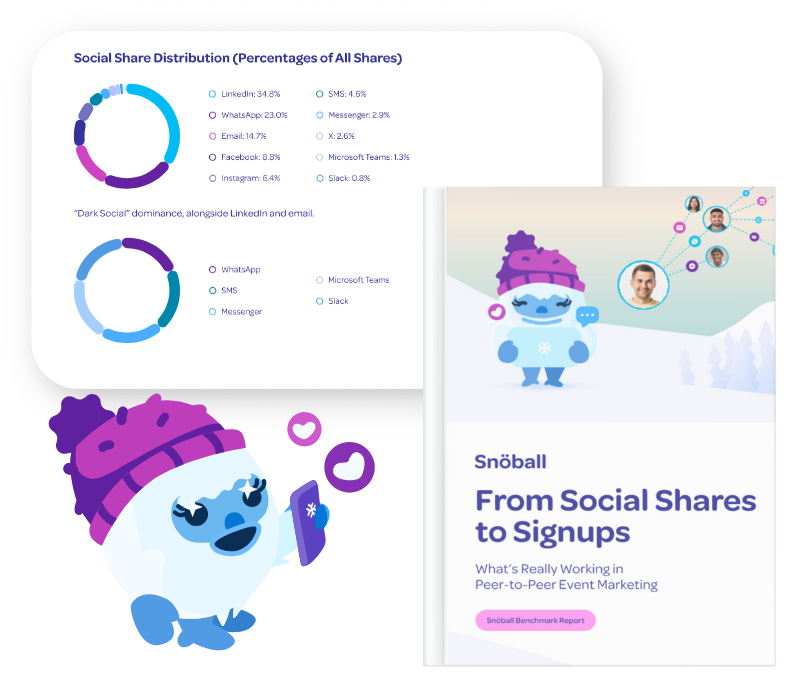Why Event Organizers Focus on Control and What Attendees Actually Want
In the organized chaos of IMEX 2025, surrounded by flashing LED walls, champagne receptions, and perfectly produced booths, one conversation cut through the noise.
Freeman’s SVP of Industry Research & Insights, Ken Holsinger, joined us for a Sevinar Snö On The Ground conversation on attendee retention strategies and the newest data from the company’s latest Trust Report.
The takeaway wasn’t about technology or tactics. It was about perception.
Organizers and attendees don’t disagree about the value of events. They simply define experience through different lenses.
Organizers tend to focus on what they can control: the staging, lighting, speakers, production, and show flow. The tangible, budget-driven levers they can manipulate.
Attendees, on the other hand, focus on what they can achieve: learning something meaningful, connecting with someone new, or discovering a product or idea that moves their work forward.
That’s not ignorance. It’s human nature. We optimize for what we control.
But it also explains why many events look spectacular and still leave audiences underwhelmed.
The Experience Gap Between Event Organizers and Attendees
Freeman’s latest data focused on one of their four core principles: Experience.
When both sides were asked what “experience” meant, planners pointed to what they designed. Attendees pointed to what they gained.
That gap shows up in the numbers.
-
78% of organizers believe attendees leave with memorable moments.
-
Only 40% of attendees agree.
-
Those who did experience a “moment that mattered” were 85% more likely to return the following year.
The industry’s average retention rate? Around 30%.
Experience isn’t a production element. It’s an outcome that drives attendee retention strategies for future events.
If we want audiences to come back, we have to help them reach the outcomes they care about.
How to Design Events Around Attendee Intent, Not Organizer Assumptions
Holsinger’s advice was simple but transformative: ask better questions.
Most registration forms ask for demographic data, the information organizers need to fulfill their own objectives. But few ask what attendees actually want.
He suggests adding a single, deceptively simple question:
“What is your primary objective for attending?”
That one data point can shape the entire event journey and facilitate their core objectives.
Pre-event emails can be segmented by intent. Onsite recommendations can guide people toward sessions, speakers, or exhibitors that match their goals.
And post-event surveys can close the loop by asking, Did we help you achieve what you came for?
In Freeman’s analysis, events that applied this model saw a 38% lift in overall satisfaction.
The reason is basic but powerful: when people feel heard, they feel value.
The result is organizers setting themselves up to retain their attendees year over year.
The Generational Shift Changing Event Experience and Trust
This isn’t just a tactical shift. It’s generational.
By 2030, Boomers will make up less than 5% of the workforce, while Millennials and Gen Z will represent nearly 60%.
These emerging audiences are digital natives who consume information everywhere yet trust it almost nowhere. They use AI more than any generation before them, yet they also trust it the least.
And that skepticism is actually great news for events.
As Holsinger shared, 92% of younger professionals say they build the most trust face to face.
That makes live events the most credible marketing channel left. A space where transparency, authenticity, and human connection drive ROI.
How to Market Event Experiences Honestly and Build Long-Term Trust
Here’s the paradox: the very thing that makes events powerful is also what’s hardest to market.
You can’t photograph trust. You can’t headline meaningful connection.
So we instead default to what’s measurable. Things like attendee numbers, square footage, and speaker lineups.
But that scale often intimidates the very audiences we’re trying to attract, especially younger professionals who crave belonging over volume.
We need to flip the script.
Marketing an event should feel like an invitation to a journey, not an ad for a show.
Show people what they’ll achieve and what kind of experience they can expect, not just what they’ll see.
If your campaign promises connection, deliver connection through intentional networking design.
If it promises learning, make the learning interactive and relevant. Make it fun.
If it promises commerce, make discovery easy, not overwhelming.
Because retention doesn’t start at the badge scan. It starts months before with truth in the marketing.
When what’s advertised aligns with what’s experienced, that’s when audiences show up and come back. And they’ll even spread the word from peer to peer.
For event marketers developing attendee retention strategies, Holsinger’s data offers a blueprint for aligning experience and trust.
Key Takeaway: Align Event Marketing With What Audiences Will Actually Experience
As IMEX 2025 proved again, our industry is full of brilliant ideas, immersive tech, and ever-rising expectations.
But Ken Holsinger’s data, and our conversation, remind us that the future of event growth lies in something deceptively simple: aligning what we say the experience is with what the audience actually feels it to be.
And it all starts with listening.
That’s not just event strategy. That’s event integrity.
Watch the full 7-minute Sevinar Snö On The Ground conversation with Ken Holsinger at IMEX 2025.
For a deeper dive into the broader economics of retention, read: 7 Pillars of Attendee Retention and Event Growth





